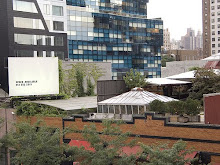
 1) Archival Image of Alexander's located at <http://www.nostalgictimewarp.com/b
1) Archival Image of Alexander's located at <http://www.nostalgictimewarp.com/b ronx.html> 2) “Burned Out in the Bronx” photo by Sylvia Plachy, used within the article “Arson For Hire” by Joe Conason & Jack Newfield, June 2, 1980. <http://www.villagevoice.com/2005-10-18/specials/arson-for-hire/> 3) Fordham Road, present day (Stephanie Hurley)
ronx.html> 2) “Burned Out in the Bronx” photo by Sylvia Plachy, used within the article “Arson For Hire” by Joe Conason & Jack Newfield, June 2, 1980. <http://www.villagevoice.com/2005-10-18/specials/arson-for-hire/> 3) Fordham Road, present day (Stephanie Hurley)
Address: Fordham Road, Bronx, New York 10458
Fordham Road, located in the Bronx, stretches from the east to the west, spanning from the Harlem River to Bronx Park. It is also the site of the largest retail strip mall in the borough, boasting vast numbers of inexpensive shops, stores and eateries. The street is crowded, always bustling with vibrant life, shoppers anxious for clothing and other cheap hip-hop oriented apparel.
Today, Fordham Road is a beacon of cheap street culture, available for purchase to anyone willing to deal with the noisy crowd. But from the late 1960s to mid 1980s, it was a location that was known more for its theaters, shops and entertainment. Amongst “the tiny triangular oases along Fordham Road, old men and women sat and chatted. Kids played in the dirt and scraggly grass. Conversations and chance encounters were the norm, not the coldly efficient consumer rituals of suburbanized city spaces” (Gonzales). The locale has since shifted from a place of community bonding to a symbol of community decline, marked by the low-quality merchandise and dirty, crowded surroundings.
Perhaps most interestingly--and the main reason this site was chosen--is the fact that it was here, along Fordham Road, where a line of demarcation was drawn, a line which activists vowed would not be traversed by the arson incidents that ravaged the South Bronx during this tumultuous historical moment—“the line where [they] vowed the blight would stop” (Gonzales). Arson specifically "refers to the intentional destruction of property by fire" (Brady 2). During the mid-1960s, “the number of structural fires began to rise rapidly in New York City, primarily in neighborhoods of overcrowded and under-maintained tenement housing” (Wallace 434). Arson fires in New York City were "heavily concentrated in the heavily black and Hispanic South Bronx district, which was gutted by more than 30,000 arson fires from 1970 to 1979" alone (Brady 4).
These intentional arson incidents were reactions to various different social stressors, including failing urban planning and government programs; the major causes of unrest within the South Bronx were reactionary. Such problems included the disorganized welfare system, which aided in the destruction and softening of the housing market as tenants were forced into rent delinquency for defaulting on inaccurate welfare rent grants, as well as the increase of the population of racial minorities such as Blacks and Latinos, which forced whites to leave for fear of property values declining (Glazer 273). The production of more low-income housing and the rise of crime left landlords and tenants angry and desperate. Thus, the "arson-for-profit schemes" began as a result of racial, housing and governmental programming issues, and hundreds of people were displaced as buildings were set ablaze in order to benefit the landlords and corrupt government officials who would then collect the insurance payments. The poverty-stricken tenants of the lower-income housing in general simply could not provide enough profit.
Yet, Fordham Road is where the cry for help was answered. The arsons never spread past the snaking strip of shops, preventing further fire damage to the buildings--and residents--of the area of the Bronx above it. The road stands as a testament to the destruction and flawed policy of the South Bronx, and a barrier between it and the Northern, more privileged Bronx space.
Sources:
Brady, James. Arson, Urban Economy, and Organized Crime: The Case of Boston. Social Problems, Vol. 31, No. 1 (Oct., 1983), pp. 1-27. University of California Press.
Glazer, Nathan, The South-Bronx Story: An Extreme Case of Neighborhood Decline , Policy Studies Journal, 16:2 (1987:Winter)
Wallace, Rodrick. Fire Service Productivity and the New York City Fire Crisis: 1968-1979, Human Ecology, Vol. 9, No. 4 (Dec. 1981), pp. 433-464
Gonzales, David. "Fordham Road, Where the Blight Stopped". NY Times City Room Blog. September 21, 2009. <http://cityroom.blogs.nytimes.com/2009/09/21/fordham-road-where-the-blight-stopped>

Nice blog thank you for sharing such an wonder full blog our website is regarding retail please approve website.
ReplyDeletehttps://www.manthan.com/nrf-2019/